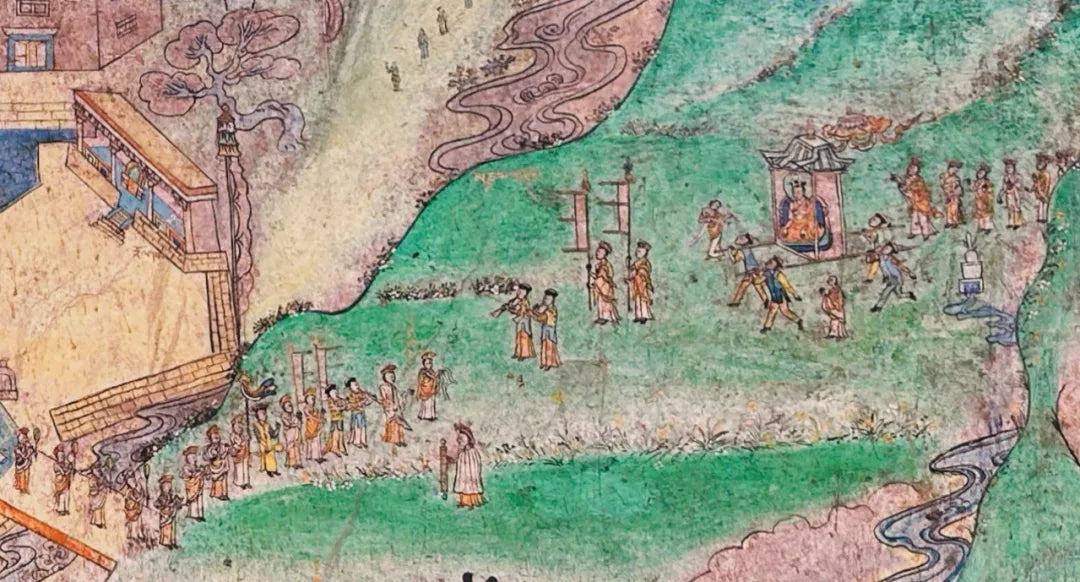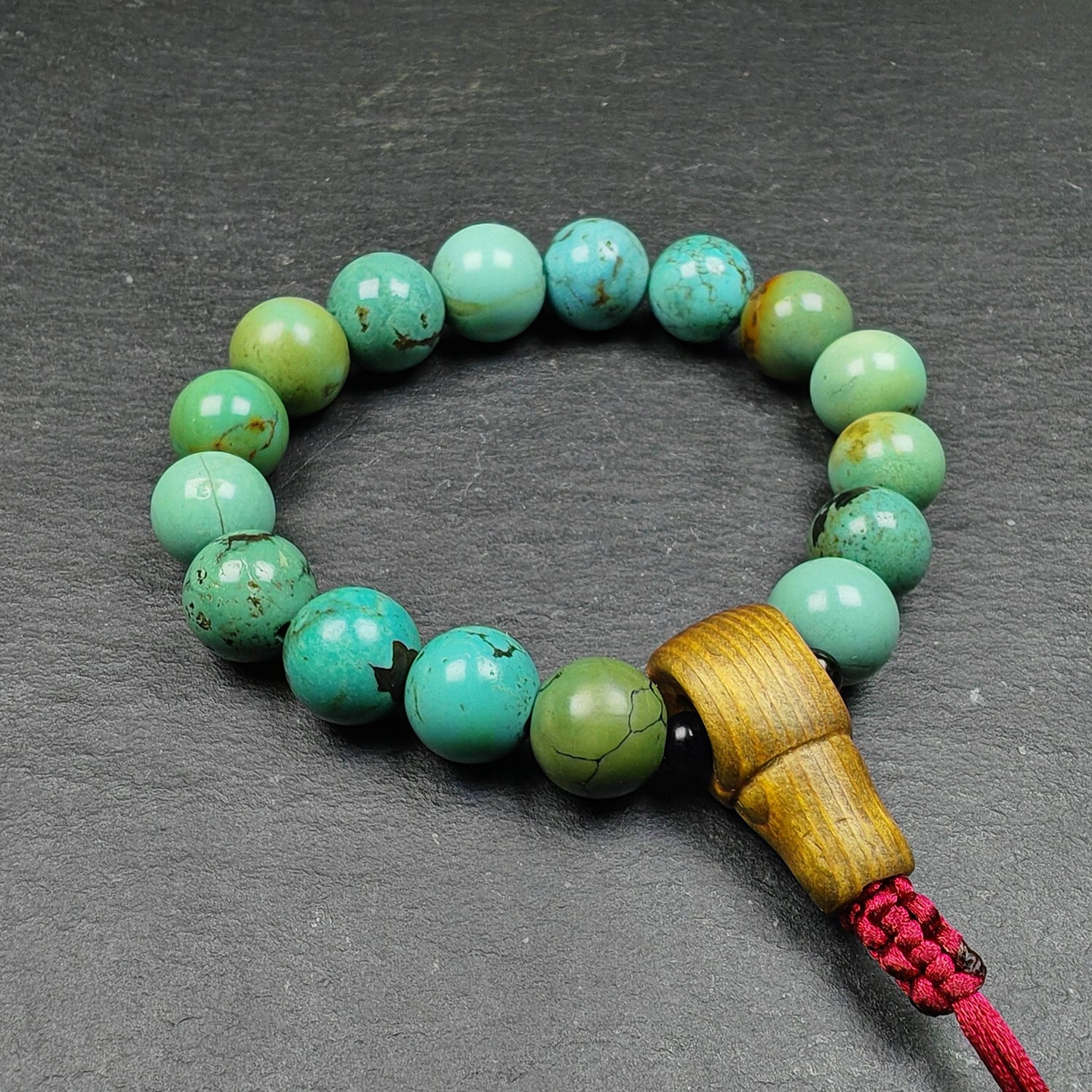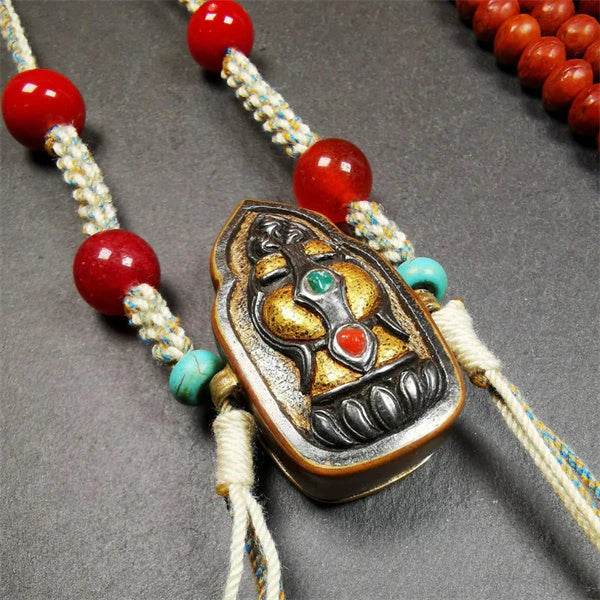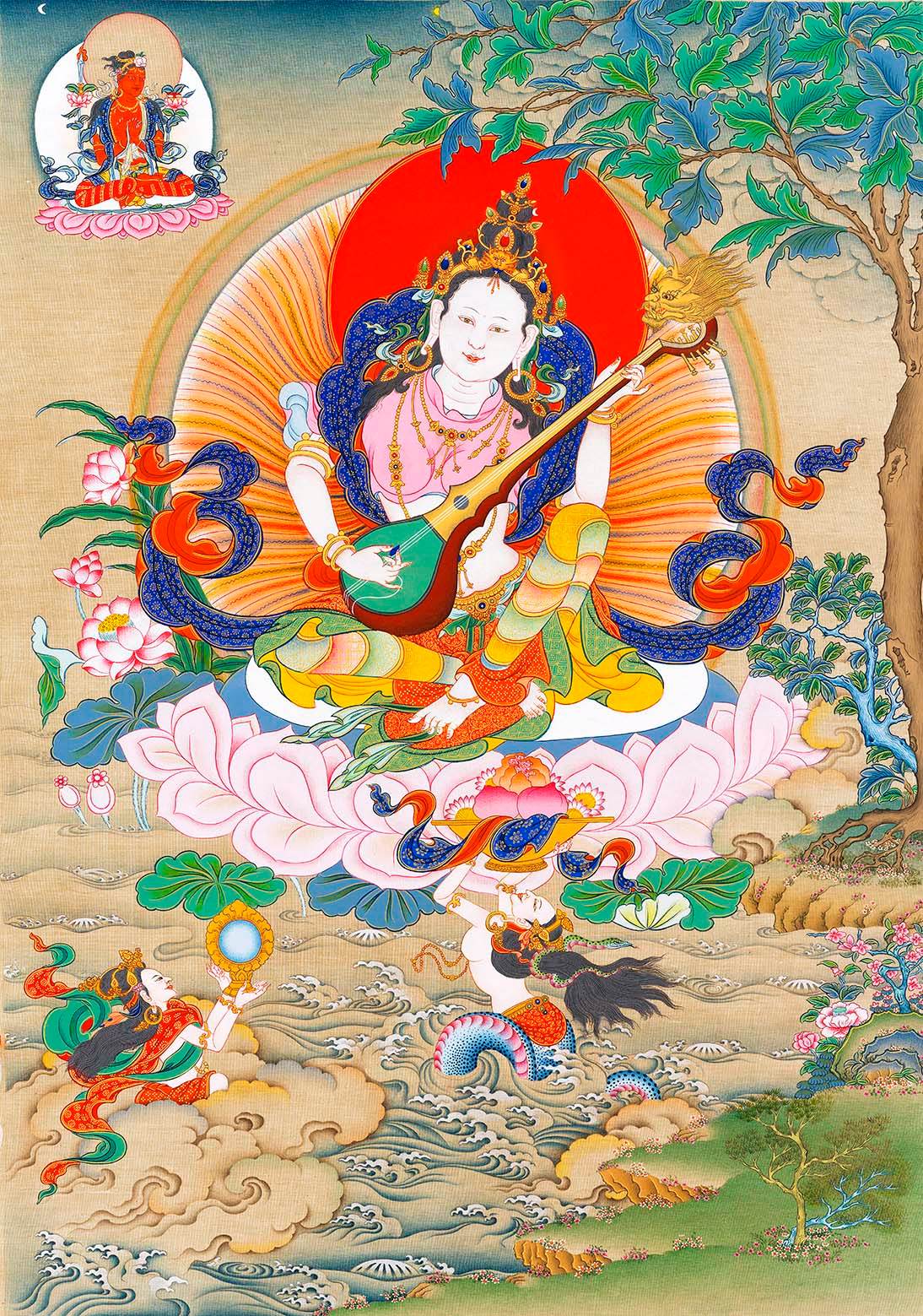
The Four Seasons of Chubu Monastery (Part 1): Spring

"Chubu Monastery Under Renovation"
Selected from the thematic article *The Giant Thangka of Chubu Monastery* (1995)
by Terris Temple and Leslie Nguyen

"The Thangka Display Ceremony at Chubu Monastery"
Selected from the thematic article The Giant Thangka of Chubu Monastery (1995)
by Terris Temple and Leslie Nguyen
This silk thangka was created between 1992 and 1994
and was first displayed at Chubu Monastery in May 1994
དཔལ་གྱི་སྟོད་ལུང་མཚུར་ཕུ།
འོག་མིན་ཐུགས་ཀྱི་གནས་མཆོག།
མ་དང་མཁའ་འགྲོ་རྒྱ་མཚོ།
སྤྲིན་ལྟར་འདུས་པའི་གནས་ཡིན།
"Auspicious Tölung Chubu, the jeweled land of pure meaning,
The ocean of dakini mothers gathers like clouds in this place."
—Teaching given by the 16th Karmapa, Rigpe Dorje
(ཀརྨ་པ་རིག་པའི་རྡོ་རྗེ་;1924–1981) in 1961 (Iron Ox Year of the Tibetan calendar)

"The Main Structures of Chubu Monastery"
Photographed by Hugh Richardson's team in 1946 or 1950
Held at the Pitt Rivers Museum, University of Oxford

"The 16th Karmapa Before the Camera"
Photographed by Hugh Richardson's team in 1946 or 1950
Held at the Pitt Rivers Museum, University of Oxford
Chubu Monastery-Spring
དཔྱིད་དུས་གསུམ་གྱི་རྣམ་པ་འདི་ལྟ་སྟེ།
དུས་མཐུན་བསིལ་གཡབ་རྗེས་མཐུན་རླུང་བཅས་ཞིང་།
ལྗོན་སོགས་ལོ་འདབ་གསེར་བུ་རབ་ཏུ་འཁྲུངས།
སིལ་སྙན་ཚོགས་རྣམས་སྒྲ་སྙན་རྒྱུན་དུ་འཁྲོལ།
སྤྲིན་དཀར་ཞི་བ་མེ་ཏོག་ཆར་ལྟར་འབབ།
མཐོ་ཁྱད་ལྷུན་མཛེས་ལྡན་པའི་རི་བོ་དང་།
བདེ་གནས་སྤང་ཚོགས་སྔོ་ལྡུམ་རྒྱས་པར་བྱེད།
How to Describe the Scenes of Spring?
Timely breezes fan like gentle waves,
Fresh buds sprout on every leafy branch.
Melodic cymbals and lutes sing endlessly,
While silent clouds rain blossoms down.
Majestic mountains stand in solemn grace,
Joyous meadows bloom with fragrant herbs.
—From *In Praise of Chubu* (མཚུར་ཕུའི་བསྟོད་པ་ལ་བཞུགས་སོ།)
by the 3rd Karmapa, Rangjung Dorje (1284–1339)

"Panorama of the Sacred Chubu Site"
Wall painting at Chubu Monastery, photographed by the author
Returning to the Old Land at Eighty, the Elder's Remembrance Remains Unchanged.When Dusum Khyenpa (1110–1193) returned to the Ü-Tsang region, the "Gampo Uncle-Nephew" (སྒམ་པོ་ཁུ་དབོན་) who had once given him numerous instructions and teachings had all passed away. Historical accounts of the "Gampo Uncle-Nephew" vary. Aside from Gampopa (1079–1153), whose status as Dusum Khyenpa’s revered master and source of Dharma remains unchallenged, there were also Gompo Tsultrim Nyingpo (1116–1169) and Gomchung Sherab Jungne (1130–1173; the latter is sometimes not included in the title of "Uncle-Nephew"). These two were not only Gampopa’s nephews but also successively served as the second and third throne-holders of Daklha Gampo Monastery (founded by Gampopa in 1121).
"My legs are afflicted, making distant travel difficult. You should go to Kham to propagate the Dharma, and your activity will be accomplished."
Holding Gampopa’s words in mind, Dusum Khyenpa embarked on his journey to Kham, blessed by the Black Crown woven from the hair of dakinis.

"The First Karmapa, Dusum Khyenpa"
13th century, held at the V&A Museum
Before completely leaving the Ü-Tsang region, this determined practitioner decided to stay for a period in the Chubu Valley (though accounts vary on the exact duration). Contrary to popular belief today, while Dusum Khyenpa founded Chubu Monastery in 1189 (Earth Bird Year of the Tibetan calendar), he had already established a connection with Chubu prior—*"his aspirations fulfilled, the master crafted a sacred site like a lotus."*
During the monastery’s construction, Dusum Khyenpa’s former dwelling (དུས་མཁྱེན་གཟིམ་ཆུང་།) and meditation cave (དུས་མཁྱེན་ཕུག་) were preserved and revered as the site’s first sacred relics (still accessible for pilgrimage today). At this stage, Chubu Monastery’s layout was modest, with structures serving simple functions: only a main hall, a scripture treasury, a stupa, and some monks’ quarters were added (some construction even continued after Dusum Khyenpa’s parinirvana).
According to oral tradition, the monastery’s founding may trace back to instructions from Gompo Tsultrim Nyingpo: *"You must return—a monastery must be built in Ü-Tsang."

"Panorama of the Sacred Chubu Site"
Wall painting at Chubu Monastery, photographed by the author
Detail: Monks and lay devotees welcome the Karmapa back to the monastery

"Panoramic View of the Sacred Chubu Site"
Mural painting at Chubu Monastery, photographed by the author
Detail: Dusum Khyenpa's meditation cave and the self-arisen "KAM" syllable
"Teacher and disciples lived and practiced together, transmitting teachings orally."Amidst the vast expanse of Chubu Monastery, Dusum Khyenpa also met the end of his life (at the age of eighty-four). Unlike the other monasteries he established, Chubu Monastery's unique geographical features, combined with the master's worldly prestige, endowed this young monastery with the stature of an ancestral seat.
When internal conflicts arose at Daklha Gampo Monastery, or when fires and earthquakes struck Lhasa, monastics and laypeople alike regarded Chubu Monastery and its valley as a natural refuge. The extraordinary leadership of the First Karmapa (even referred to as the "sole sovereign") and his legendary life experiences led people to believe that Chubu Monastery was a blessed land where "peaceful and wrathful practices could harmoniously coexist."
"This monastery has greatly benefited me."
Dusum Khyenpa's words seemed to foreshadow the monastery's future—its dharma throne eternally occupied, like the sacred mountains encircling it. However, despite such prophecies, it would take over ninety more years for the Karmapa lineage to be formally established. Chubu Monastery would come to be known as "the foundation upon which future political and religious traditions were built."

"The 2nd Karmapa, Karma Pakshi"
Late 14th century, private collection
"The rear mountain shaped like Avalokiteshvara is called the Mountain of Great Compassion, a realm of secret majesty; the lushly forested front mountain resembles the blood ocean abode of the Protector; the central mountain in the form of Maitreya is named the Mountain of Great Kindness, the pure land of Tushita."
In the past, pilgrims could often be heard chanting praises of Chubu Monastery's natural scenery along the trails (of which many versions exist). In 1248, among the procession of pilgrims appeared a goat-bearded monk with a resonant voice and the bearing of a yogi. Along the way, this dark-skinned monk shared his vision of expanding Chubu Monastery with fellow travelers.
Soon, the trinity of mountains and the river came into view—under the blessings of his words, the landscape revealed its hidden pure realm to those whose hearts were prepared. Yet this "wonderworker" did not proceed directly to the monastery for worship. Instead, he wandered among the three mountains, accompanied only by snow lions and cuckoos. When people finally found him, the cave echoed with sublime Dharma melodies.

"Panorama of the Sacred Chubu Site"
Mural painting at Chubu Monastery, photographed by the author
Detail: Self-manifested Mahakala image in the cave

"Panoramic View of the Sacred Chubu Site"
Wall painting at Chubu Monastery, photographed by the author
Detail: Central Assembly Hall of Chubu Monastery (multi-exposure processed)
"Over the next six years, this monk already renowned throughout Kham fulfilled his grand vow, expanding Chubu Monastery's scale (first phase)—even skeptics came to regard it with reverence."
Yet across Eurasia during this same period, winds of change brought frequent conflict. The monastery’s throne-holder, invited deep into Mongol territory, declared: *"Though I depart from here, wait—I shall return."* Later accounts diverge wildly about his experiences in Han lands and Mongolia. Bizarre tales of miraculous powers and politically motivated court intrigues, fabricated through sectarian rivalries, collectively shaped the master’s complex legacy.
As cultural advisor and spiritual teacher to Möngke and Ariq Böke, the Mongols’ tolerant religious policies swiftly won him multitudes of followers. Even Khubilai, despite tensions, honored him as *"Pakshi"* (roughly, "Master").

"Sacred Footprint: The 3rd Karmapa, Rangjung Dorje"
14th century, private collection

Detail from the above image: The First Three Karmapas
Left: 1st Karmapa / Center: 3rd Karmapa / Right: 2nd Karmapa
"Upon returning to Chubu Monastery, Karma Pakshi (1204–1283) devoted himself fully to its expansion (second phase), with the Central Assembly Hall (ཚོགས་ཆེན་འདུ་ཁང་ཆེ་མོ་) as the project's centerpiece."
Donations from monastics and lay patrons across Han, Mongol, and Tibetan regions—including seven loads of gold from the Yuan imperial family and support from Drogön Chögyal Phagpa—were invested in the hall. Its centerpiece, the "Buddha Adorning the World with Light," the reliquary stupa of the 1st Karmapa, the *Kangyur* written in gold and silver ink, and the Maitreya throne all became masterworks of this era.
As the pioneer of Tibet’s *Six-Syllable Mantra* tradition (later revered as an emanation of Avalokiteshvara), Karma Pakshi also constructed an Avalokiteshvara Chapel, a Cross-Shaped Chapel, and numerous meditation cells, permitting lay devotees and wandering ascetics to reside within the monastery. He openly declared himself *"a wanderer who only chose Chubu as a permanent home due to extraordinary resolve."*
After his parinirvana, his disciple Orgyenpa (ཨོ་རྒྱན་པ་;1229–1309) assumed the monastery’s throne.

"The Golden Garland of Kagyu: The Mahasiddha Orgyenpa"
Late 19th century, monastery collection
Detail: Portrait of Orgyenpa
"Like Karma Pakshi, Orgyenpa's life was equally legendary. In Tibetan philosophical systems, the Nyendrup tradition (བསྙེན་སྒྲུབ་, the practice of commitment and accomplishment) and the mercury purification techniques in Tibetan medicine both regard Orgyenpa as their patriarch."
Before the 2nd Karmapa passed away, he left these final words to Orgyenpa and his disciples: "I am the sage-yogi Rangjung Dorje. Like the sun rising anew over the eastern mountains, I will return for sentient beings." Moreover, Karma Pakshi prophesied: "In the distant Lhatö, the heir of the Black Crown will surely appear. Until his arrival, you shall oversee both spiritual and temporal affairs."
It is worth noting that during his lifetime, the 2nd Karmapa often used "Rangjung Dorje" (རང་བྱུང་རྡོ་རྗེ་) as a pen name—a name that would soon resound across Tibet.
Five years later, in 1288 (Earth Bird Year of the Tibetan calendar), a potter couple brought their four-year-old son on pilgrimage to Chubu Monastery. The ringing of a ritual bell, the child seated calmly on the dharma throne—all eyes turned to the potter’s son. "Who are you?" "I am the Karmapa!" This exchange became the heralding moment of Tibet’s reincarnation system.
Thus, the young child was recognized as the 3rd Karmapa (1284–1339). Over the next fifty-six years, he would accomplish extraordinary deeds, ushering Chubu Monastery into its golden age.

"Seal of the Karmapa"
Rubbing impression, 6.9x5.8 cm
Held at the Norbulingka, possibly a private seal






